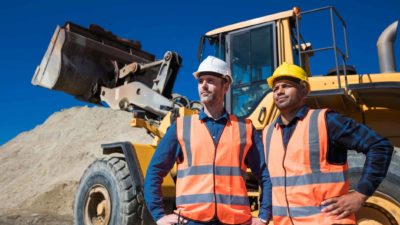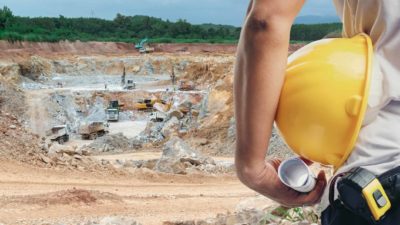Early adopters of the electric vehicle (EV) and lithium-ion (li-ion) battery trend a few years ago are likely to have seen their holdings lunge forward exponentially in that time.
Just about every player along the li-ion value chain has seen lithium shares explode over the past 12 to 24 months. All while the battery metal itself has soared more than 265% in the last year.
For instance, miners like Pilbara Minerals Ltd (ASX: PLS), Mineral Resources Limited (ASX: MIN) and Allkem Ltd (ASX: AKE) are up 211%, 34% and 138% in that time respectively.
Meanwhile, battery materials and technology company Novonix Ltd (ASX: NVX) has soared over 120% in the last year. Novonix shares now trade at $5.29 apiece. However, that's after touching a closing high of $12.15 back in December 2021.

All of the talk around EVs and batteries includes the presumption that it is a 'cleaner' source of energy.
However, is that really the case? Are EVs and batteries really 'emissions free', as the term goes?
Not everyone agrees with that statement. A quick check of the facts suggests our electrical and/or renewable alternatives for energy mightn't be as 'green' as they appear on face value.
Are batteries 'zero-emissions power sources'?
Not all those familiar with the subject totally agree that li-ion battery production is the key to a zero-emissions future.
However, the recent surge in oil and gas prices has sent shockwaves through global energy markets. A fact that "should only spur the renewables evolution as it becomes evident that Europe cannot rely on Russian supply," according to the Australian Financial Review.
Brent crude has soared to near-record highs in the last few weeks. Brent now trades at US$117 per barrel on last check. Whilst United Kingdom gas futures thrust more than 1,300% higher in the 12 months to 7 March. They have now spiked 520% in the past year.
Not to mention, the price of lithium has set a series of consistently new all-time highs over the last year. Lithium now trades at 497,500 Chinese yuan (AU$103,700) per tonne. Trading of nickel futures, another battery metal, was suspended on the London Metal Exchange two weeks ago as traders went into meltdown from tensions in Ukraine.

All of these factors are certainly relevant for the cost of li-ion batteries to the end market. However, what about the makeup of these batteries? What are the other costs involved?
Experts weigh in
Says Michael Vail, principal of Tre Ponte Corporate:
To manufacture each EV auto battery, you must process 25,000 pounds [11.3 tonnes] of brine for the lithium, 30,000 pounds [13.6 tonnes] of ore for the cobalt, 5,000 pounds [2.27 tonnes] of ore for the nickel, and 25,000 pounds [11.3 tonnes] of ore for copper.
All told, you dig up 500,000 pounds [226.8 tonnes] of the earth's crust for one battery.
A typical EV battery weighs one thousand pounds [450kg], about the size of a travel trunk. It contains twenty-five pounds [11.3kgs] of lithium, sixty pounds [27kgs] of nickel, 44 pounds [20kgs] of manganese, 30 pounds [13.6kgs] cobalt, 200 [90kgs] pounds of copper, and 400 [180kgs] pounds of aluminum, steel, and plastic. Inside are over 6,000 individual lithium-ion cells.
Vail is actually referencing notes from a thought-provoking essay from author Bruce Haedrich. Titled "How much do you know about batteries?", the piece questions the validity of renewable energy's greenness.
Where do green batteries get their energy?
One other point the author highlights is that batteries don't actually make electricity. They store electricity that is produced somewhere else.
At the moment, the primary means of energy production on a global scale (Australia included) is by coal, uranium, natural gas or diesel-fuelled generators.
Since a good portion of global energy produced is from fossil fuels, this could mean that a good portion of the EVs on the road are also "indirectly powered by fossil fuels" he postulates.
"Einstein's formula, E=MC2, tells us it takes the same amount of energy to move a five-thousand-pound gasoline-driven automobile a mile as it does an electric one," Haedrich writes.
The only question again is what produces the power? To reiterate, it does not come from the battery; the battery is only the storage device, like a gas tank in a car.
Not-so-clean clean energy
In his essay Haedrich also extends critique to both solar and windpower. He encourages readers to think more deeply about the embedded and operational costs involved with each.
"Windmills are the ultimate in embedded costs and environmental destruction," he writes.
Each weighs 1,688 tonnes (the equivalent of 23 houses) and contains 1,300 tonnes of concrete, 295 tonnes of steel, 48 tonnes of iron, 24 tonnes of fibreglass, and the hard to extract rare earths neodymium, praseodymium, and dysprosium. Each blade weighs 81,000 pounds and will last 15 to 20 years, at which time it must be replaced. We cannot recycle used blades. Sadly, both solar arrays and windmills kill birds, bats, sea life, and migratory insects.
According to the United States Geological Survey, "depending on make and model, wind turbines are predominantly made of steel (66%–79% of total turbine mass); fiberglass, resin or plastic (11%–16%); iron or cast iron (5%–17%); copper (1%); and aluminium (0%–2%)."
There are also extra carbon-costs associated with the transportation and processing of each of these metals and/or chemicals as well.
Contrasting this to output, statistics shared in the Statistical Review of World Energy 69th Edition show that wind power supplied over 5% of electricity generation globally in 2020. Having said that, it accounted for around 2% of global consumption.
Renewable energy floating in the breeze
This year, renewable energy indices are struggling. There's been an approximate 7% decrease in the Wind Energy Index since the beginning of 2022. In the same time, there has been a 6% drop in the Solar Energy Index, per Trading Economics data.
Both indices have collapsed around 14% and 15% in the past 12 months, respectively.

More than meets the eye
There is a generally-held consensus that climate change is happening. What's more, humanity has a role in ensuring that we look after the planet as best as we can.
A debate has emerged surrounding the best way to go about this. Renewable energy is often at the forefront of the argument.
Most of the debate centres around direct costs, mileage/wattage and the indirect costs associated with mining and producing these products.
Alas, the push into renewable energy in the first place, and inclusion of the latest technologies has started to take effect, per the IVL Swedish Environmental Research Institute.
The report, published in 2019, showed that carbon emissions from battery manufacturing range from 61kg to 106kg per kilowatt hour.
Converting that into kilograms of carbon dioxide (CO2) per hour equals a range of 14.2kg to 24kg CO2/hour, at roughly 24 to 40 cents per minute.
Contrast that to CO2 emissions from driving petrol and diesel engines at around 2.4kg per litre on average, with diesel cars emitting around 20% less than petrol.
The Household, Income and Labour Dynamics in Australia (HILDA) survey 2019 showed that Australians are travelling 54 minutes per day on average, meaning the average car trip could surmount to 129.6kgs of CO2 emitted into the atmosphere, or $2.16kg/minute.
In America, the figure totals to an emission of 4.6 metric tonnes of CO2 per year for a typical passenger vehicle, according to the United States Environmental Protection Agency.
Using renewable energy to make renewable energy
The analysis highlights that many vendors are using 100% renewable energy in the production of their batteries, and recycling waste products, further reducing emissions.
There is also increasingly available data that shows electric vehicles are cheaper to run on average than internal combustion engines. What's more, purchase costs are reducing substantially.
Noteworthy is that electric vehicle pioneer Tesla Inc (NASDAQ: TSLA) opened its first European gigafactory in Germany last week, with the hope of driving new car costs down further.
The point is that everything comes with a cost. Even with the push into renewable energies, it appears we aren't there yet in regard to completely offsetting emissions.
In other words, there is more than meets the eye when it comes to renewable energy.
Whilst the transition is ongoing, there are still plenty of kinks to be ironed out. As that occurs, there should be plenty of opportunities for Australian investors to join the race.








